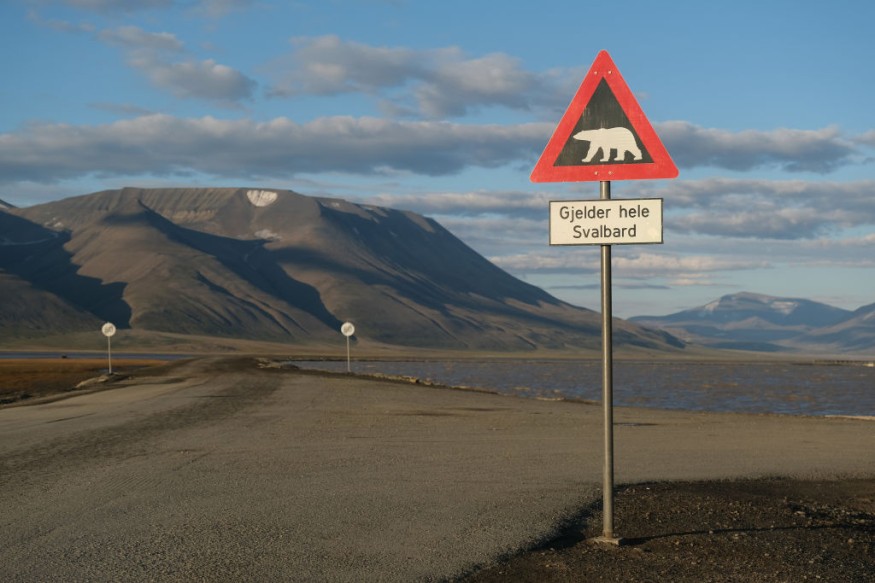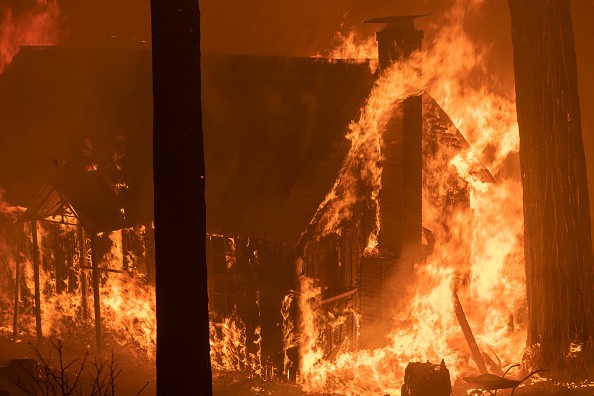It has been the sixth straight warmest year on record worldwide, with concrete-buckling heat, disastrous deluges, and a site in the so-called "cone of cold" experiencing 80-degree temperatures.

2015 to 2021 were the seven warmest years on record worldwide "by a clear margin," according to the Copernicus Climate Change Service (C3S) of the European Union, with records dating back to 1850 - a total of 171 years.
According to the research, 2021 is fifth on the list as the warmest year on record globally, only slightly warmer than 2015 and 2018. The annual average temperature in 2021 was 0.3 degrees Celsius higher than the 1991-2020 reference period's temperature and 1.1 to 1.2 degrees Celsius higher than the pre-industrial level of 1850-1900s temperature.
5th Hottest Year

The fifth hottest year on record culminated in Europe's warmest summer on record, as well as a disastrous heavy rainfall event that swept over the continent, displacing thousands of people and killing almost 200.
In Asia, Oymyakon, Russia, traditionally regarded as the coldest inhabited area on the planet, had a record-high temperature of 88.8 degrees Fahrenheit (31.6 degrees Celsius) in June, much above the 68-degree normal. Temperatures in Oymyakon had dropped to 73 degrees Fahrenheit below zero in January, a 161-degree difference from the previous year.
Related Article : Statistic Reveals How Big of a Damage Wildfires Caused in 2021
Persistent Drought
In terms of the United States, 2021 was the nation's fourth-warmest year on record. A persistent drought almost drained reservoirs across the West, the Midwest was ravaged by an extraordinary December derecho, and a concrete-buckling heat wave blasted the Pacific Northwest.
June 2021 marked the hottest June on record for North America when a heat wave in the Pacific Northwest took over 100 lives, cracked pavement, and melted wires. From June 26 to 28, Portland, Oregon, had three consecutive days of all-time high temperatures, with the mercury reaching 108 degrees F, then 112 degrees F, and finally 116 degrees F. Only during the warmest months of the year, July and August, average high temperatures reach the low 80s in the city.
According to NOAA's National Centers for Environmental Information, while June 2021 was followed by the 13th warmest July on record for the contiguous United States, the month internationally "won the unpleasant distinction of being the world's hottest month ever recorded" (NCEI).
Warn Seasons
According to Climate Central, the year saw the warmest summer and third-hottest autumn on record for the United States, with 2021 closing with the hottest December on record for the contiguous United States. That month's temperatures were 6.7 degrees Fahrenheit above normal.
Climate Central research claimed that "more heat-trapping greenhouse gases in the atmosphere leads to warmer and riskier situations as we saw in 2021." Recent emissions trends are in the wrong direction: global carbon dioxide (CO2) emissions from fossil fuels increased by 5% in 2021 compared to 2020, returning to pre-pandemic levels.
Preliminary analysis of satellite measurements confirmed atmospheric greenhouse gas concentrations continued to rise during 2021, with carbon emissions from wildfires worldwide spewing out 1,850 megatonnes - higher than last year's measure of 1,750 megatonnes of carbon emissions, according to C3S, partnering with the Copernicus Atmospheric Monitoring Service (CAMS). Despite the increase in 2021, carbon emissions from wildfires have been dropping worldwide since the beginning of the records in 2003.
This does not, however, diminish the impact of wildfires in 2021.
For any summer in the CAMS data record starting in 2003, "North America had the largest quantity of carbon emissions (83 megatonnes), as well as other pyrogenic emissions from wildfires."
Extreme Wildfires

Extreme wildfires were worsened by regional hot and dry weather across the United States, leading to a vicious cycle of flames spewing more carbon emissions, contributing to warmer and riskier conditions for other wildfires.
Wildfires destroyed over 7.1 million acres in the western United States in 2021. The Dixie Fire alone burned about 1 million acres (960,000 acres), making it California's second-largest wildfire on record. One of 2021's weather and climate crisis events, the wildfire season, caused at least $1 billion in damage.
Scorching US
In 42 years of records, the United States has had seven years with ten or more billion-dollar weather and climate crisis occurrences. According to NCEI, the only previous years that saw ten or more of these occurrences hit the country outside this period were 1998, 2008, and 2011-2013. The year 2020 witnessed the most billion-dollar catastrophes in a single year, with a total of 20 billion dollars in disasters in 2021. For example, Hurricane Ida struck Louisiana before traveling to the Northeast, and the harsh chill swept over Texas around Valentine's Day.
Since 1980, there have been seven billion-dollar occurrences every year on average.
To add insult to injury, according to Climate Central, the average period between billion-dollar catastrophes in the United States has plummeted from 82 days in the 1980s to 18 days on average from 2016 to 2020.
However, experts emphasize that it is critical to know where the world is at to notice a changing climate and considerable increase in weather and climate disasters to take more effective action.
Also Read : How Climate Misinformation Through Social Media Worsens the Battle Against Climate Change
For more news about natural calamities, don't forget to follow Nature World News!
© 2025 NatureWorldNews.com All rights reserved. Do not reproduce without permission.





